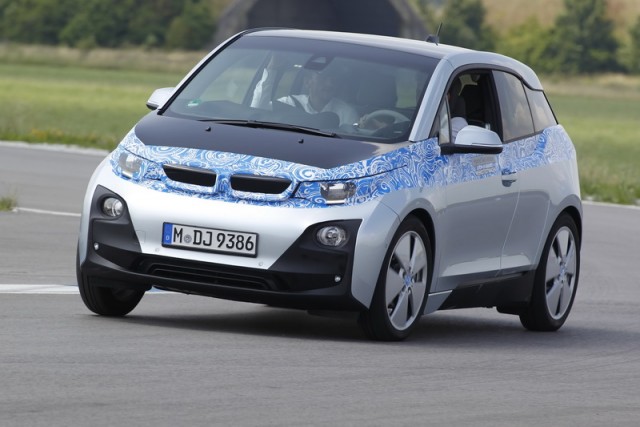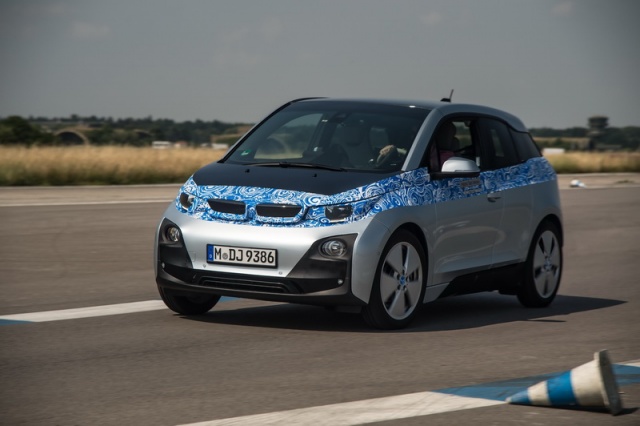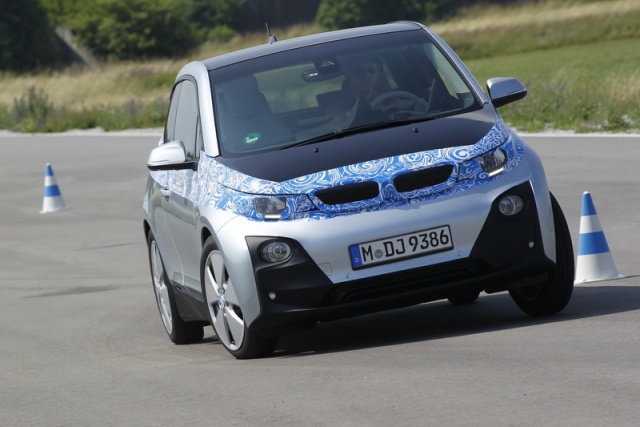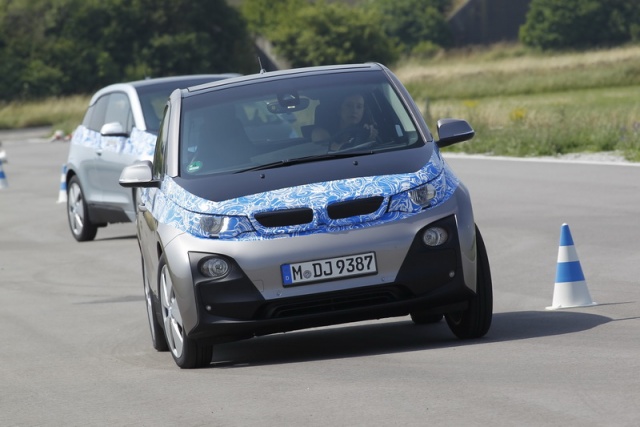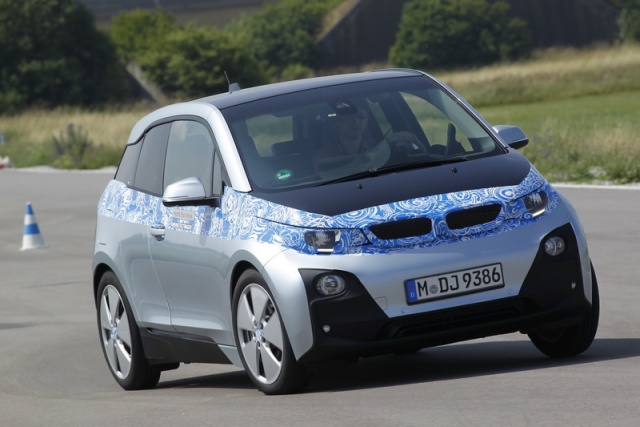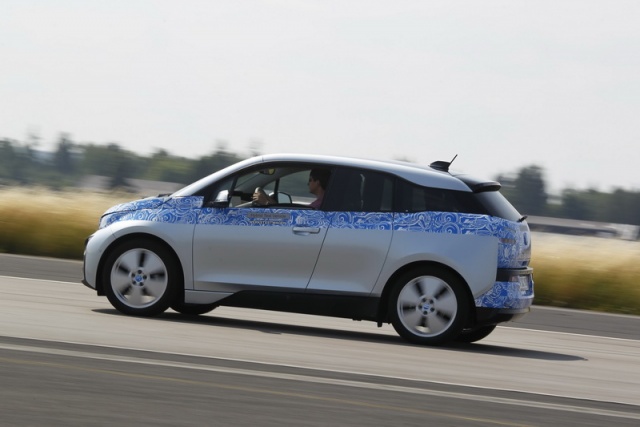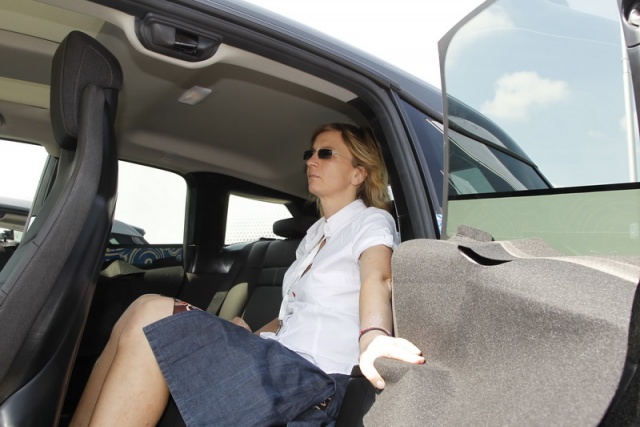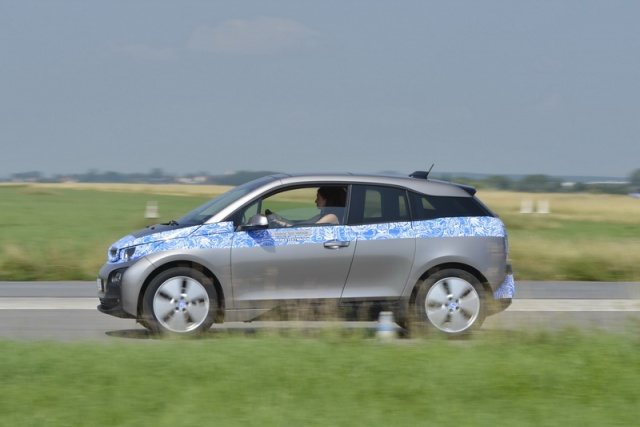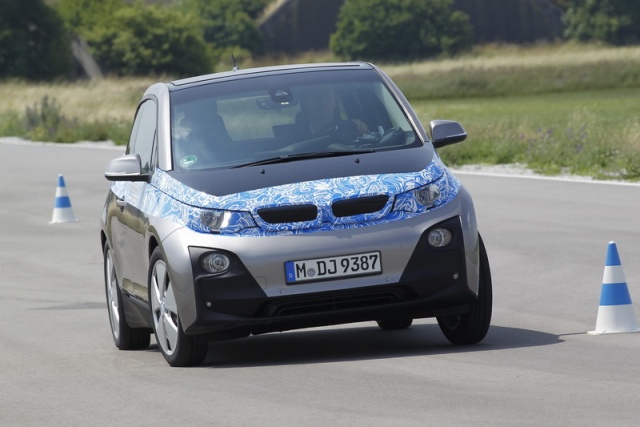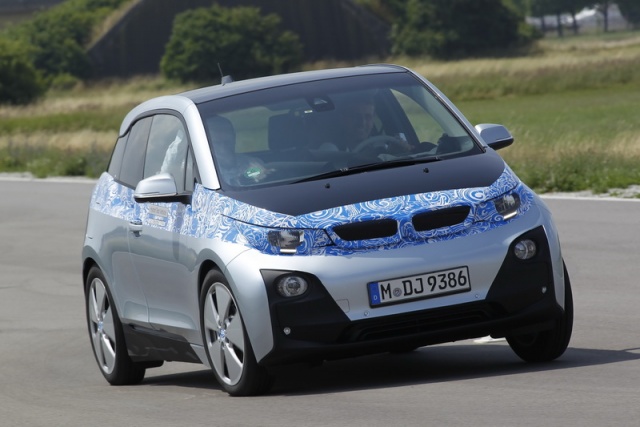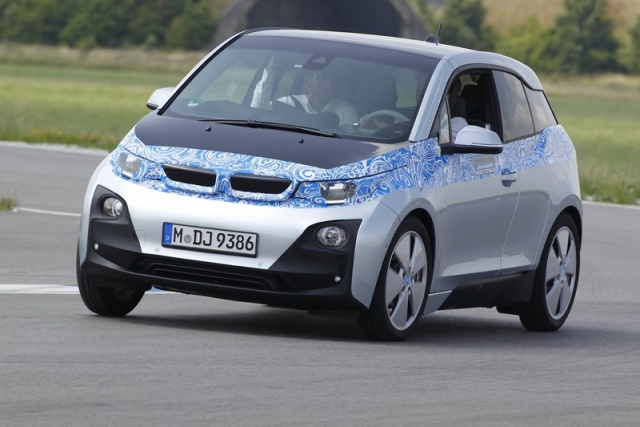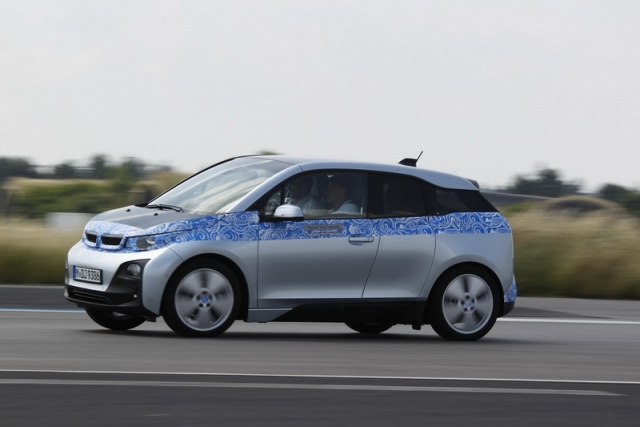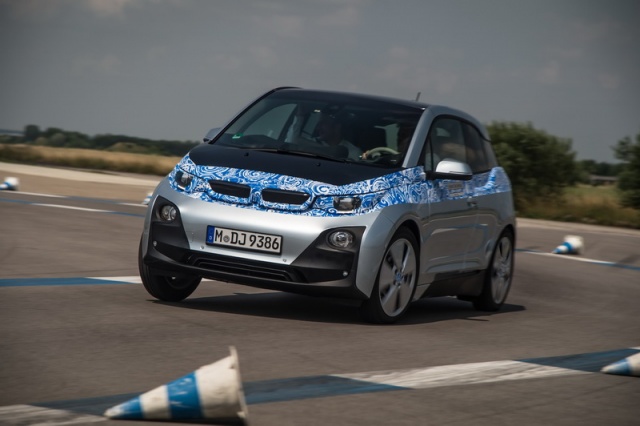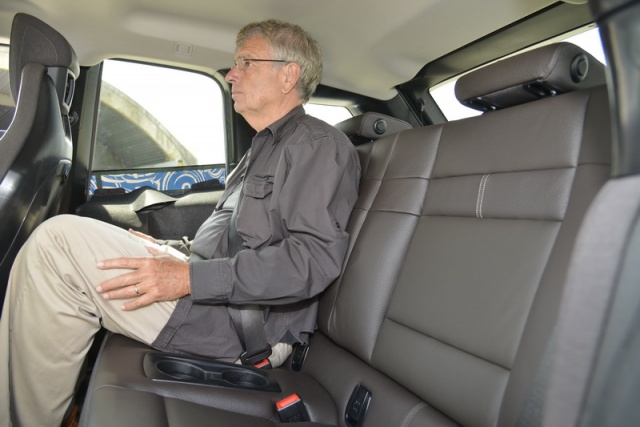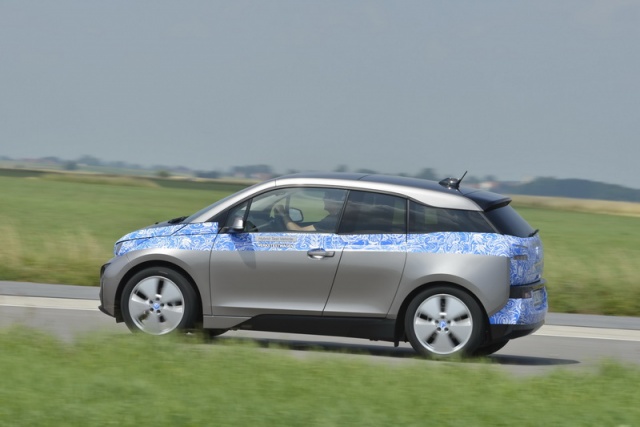BMW will enter the electric car fray later this year with the i3 city hatch, a premium product aimed at the green-conscious buyer. What's more surprising is that the guys from Munich want to ensure that the i3 is not only virtuous, but also damned good fun. We drive a pre-production version and come away with a smile on our faces.
In the metal
While our test car was wearing typical, light pre-production disguise, there was enough of the BMW i3 on show to get an idea of how the finished car will look when it hits the market in November. It's an upright, high-sided vehicle but the swooping roof, chunky dimensions and unusual creases here and there mean it should be an attractive thing, even if the first car it brings to mind is the Audi A2. Nevertheless, we particularly like the large alloys at each corner, which go a long way to negating the i3's bluff sides, and the overall adjective we'd apply is 'futuristic', presumably exactly what BMW was aiming for.
The interior is an unfinished symphony at the moment, so it's a little harder to say with any great certainty what it will look like in there - or what equipment you'll get as standard. Still, there's a good driving position with great visibility due to the high-rise nature of the car; you can expect typical BMW switchgear such as you'd find in anything from a 1 Series up to an X5; and as a piece of packaging it's superb - despite being a gnat's whisker shorter than four metres, there's plenty enough space for four adults inside and it has a decent boot too. That's thanks to the construction putting the battery pack in the floor between the axles to free up interior space, as well as doors akin to a Mazda RX-8's doing away with a B-pillar - allowing easy access to the back bench. The unusual bits are the drive selector on the steering column and a digital display screen behind the steering wheel, showing current power usage and predicted range.
Driving it
I will happily admit I am hardly the target market for the BMW i3, given that I'm something of a sceptic when it comes to electric cars and that my dream BMW is an E61 M5 (capable of ruinous fuel consumption and a filthy CO2 figure of 348g/km). So when I say I was hugely impressed by the i3, you can only begin to imagine how good it is.
There's really no reason to have made this eco-warrior such an entertaining drive, other than to preserve BMW's reputation for fine dynamics. The i3 has a commendably low centre of gravity, which makes it a very capable hatchback. The steering is light and artificial in its responses, which seems to be the way of most cars nowadays, but there's a bit of heft to it once you get going and it tells you enough about what those slender 155/70 front tyres are doing to allow you to really chuck the i3 about. It's rear-wheel drive too, which is a boon, although once it runs out of grip - and it takes significant corner speed to achieve this state of affairs - it will understeer. However, it can change direction far better than anything this tall has a right to and, although there's some body roll, the suspension is a beautifully-judged mix of compliance and dynamic ability. The brakes also have no problem hauling something which weighs 1,195kg down from speed time and time again.
If you've never driven a full electric vehicle before, the performance characteristics will still be an alien experience to you. The i3 accelerates in near-silence no matter how aggressively you drive it, pulling relentlessly towards that 150km/h limited top speed. While its 0-100km/h figure of just over seven seconds is middling by today's standards, 250Nm of torque is available instantaneously at any revs, meaning the i3 fires out of bends with incredible traction; 0-60km/h takes just 3.7 seconds for example. As we piled on the laps and the range began to tumble, we didn't experience any real fading of power until right at the end, and even then it was negligible. All the time, of course, the i3 remains velvet smooth in a way a car with a conventional combustion engine can only dream of.
The i3 offers three modes, which extend range and reduce the top speed accordingly. Comfort is the base mode and gives the most urge, a 150km/h limited top speed and the quoted range of 160 kilometres. ECO PRO and ECO PRO+ apparently add another 19 kilometres on to the range each, while sacrificing some outright pace (120- and 90km/h limits respectively), but BMW is keen to emphasise that achieving a 200-mile range in ECO PRO+ would require some pretty freaky, traffic-free driving conditions - something like a zombie apocalypse, for example. However, demand full throttle in either of the ECO modes and the i3 gives you maximum power as a safety precaution, overriding the lower speed limiters to haul you quickly out of flesh-eating danger.
What you get for your money
The price of the i3 hasn't been confirmed, but BMW bills it as 'zero-emission mobility in a premium car package' so you can bet it won't be cheap. A lot of weight-saving materials have gone into the construction of the i3, yet those very worthwhile processes also bump up the production costs. A rough yardstick is the Opel Ampera, which will cost about €45,000; I'm guessing the i3 won't undercut the Vauxhall. When you consider something more conventional like a Hyundai i10 is sub-€12,000 and will do 60-odd to the gallon, the case for electric starts to look a bit more flimsy.
It's also unclear at this stage what the final interior spec will be. The test car didn't have leather seats and a paragraph buried in the press bumf suggests the fancy navigation system will be optional. What you will get, though, is a very spacious car capable of seating four adults in comfort, and of course all the fancy lithium-ion/e-motor tech with which to lord it over people with their dowdy internal combustion engines.
Worth noting
It was bizarre that BMW set up so demanding a handling circuit for the hatchback i3 for our drive, which by the company's own admission, will be a purely urban animal - so its excellent dynamics will probably be completely overlooked by most owners. However, the next car in the i-range will be the i8 supercar, and if it's anything like as entertaining as its little brother, we'll all be in for a huge electric treat.
Summary
In isolation, the BMW i3 is a fabulous car. It drives far better than you could reasonably expect of an electric vehicle and it looks like a pretty funky piece of kit too. The issues arise over its potential cost, whether BMW can get a useful enough support infrastructure in place in all markets in time for the launch... and the forthcoming range-extender version, which adds in a two-cylinder petrol engine to keep the i3 going twice as long. Realistically, are you going to buy the pure battery-electric with a 100-mile range when the hybrid can quell your range anxiety? The i3 is an exceptional first effort in the green field by BMW, but we suspect it might not be the company's biggest success story.

